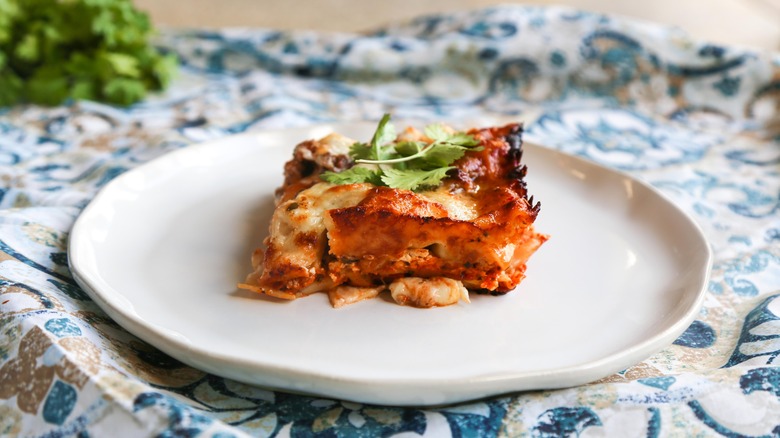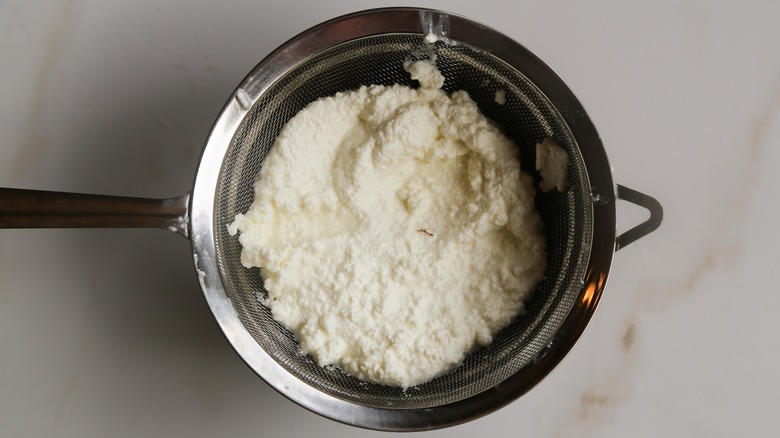Why You Need To Drain Ricotta When Making Lasagna
Let's be honest, making lasagna is a time-consuming (but worthwhile) exercise. You would be forgiven if, in your anticipation, you make a few mistakes in the interest of saving time. One such error, according to Mashed recipe contributor Maren Epstein, is spooning ricotta onto your lasagna without draining it first.
Making lasagna isn't just about balancing layers; it's about balancing textures, as well. The ideal lasagna should have a golden, crispy topping that's created by browning your favorite cheeses. After your fork breaks through that top crust, it should meet with structurally sound layers of filling and cheese, separated by perfectly cooked pasta sheets. It's that combination of crisp and tender, as well as the hearty mix of cheese and meat, that makes lasagna a comfort food supper staple.
Achieving equilibrium between tenderness and structural integrity is already a bit of a tightrope walk. That's why it's important to give yourself as many advantages as you possibly can, especially when it comes to removing excess moisture before and during the cooking process. Epstein explains that if ricotta isn't drained as part of the prep, "the moisture in the ricotta causes the lasagna to fall apart."
How to prevent an overly moist lasagna
There are other ways to prevent excess moisture in your lasagna, such as draining your meat, cooking off some of the sauce if it's too thin, and laying the lasagna sheets on some kitchen towels to drain off water. Maren Epstein also recommends using an enamel baking dish rather than Pyrex, as it will provide more even heat distribution.
Moisture itself isn't the enemy. You'll need some moisture to cook the pasta sheets through, but too much can result in a soggy end product. If a lasagna has too much liquid in it, the layers will simply slide against each other rather than merge together. This means that when you remove a serving from the dish, it will quickly separate and sag.
This problem only gets worse if you keep some lasagna aside for leftovers. Because condensation occurs naturally as a part of the cooling process, leaving a lasagna in the fridge or freezer will cause it to take on moisture. This shouldn't make too much of a difference if you've prepared your lasagna carefully, but if there's already excess moisture present, you'll end up making the problem even worse.

